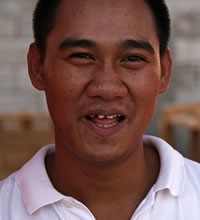Tagalog is the largest ethnic/language group residing in the Philippines, especially in the southern part of Luzon and nearby islands. The regions of Calabarzon and Mimaropa have the greatest concentrations.
They are one of the ancient dwellers of the Philippines. Tagalog culture developed in Taal, Batangas (the heartland of the Tagalog culture). The traditions of this people were passed orally. They developed a trading link with neighboring countries such as China, Japan, etc. Tagalogs have a writing system called baybayin. It uses diacritics to determine its pronunciation (similar to the Devanagari script of India).
During the Spanish colonization of the Philippines, the Tagalog homeland (especially Manila) became the center of colonial activity. The culture of these people dramatically changed from Asian to Hispanic culture (a combination of the two) during their rapid Christianization.
They eventually revolted against the Spanish colonizers. Along with other ethnic groups, Tagalogs fought against the invading Americans and later, the Japanese.
After gaining their independence, the Tagalog population grew rapidly. A poor economy and political corruption have led to poverty, causing many to migrate to 56 countries for work.
The largest destinations for Tagalogs have been in the United States and Canada.
The first Tagalog settlers in Canada arrived in the 1930s. In the 1970s more came to Winnipeg to work in clerical, sales and manufacturing jobs. It was the 1980s when a large number came as contract workers to work as caregivers. Starting in the 1990s there has been a steady stream of employees coming to Canada from the Philippines.
Tagalogs earn far more than they would had they remained in the Philippines. However, they are less visible than other Asian immigrants, and they tend to earn less than the Chinese, for example. The more fortunate work in the business, IT, or government sector and send plenty of money home to their families. They tend to have a good education, but few have advanced degrees. Such people often permanently settle in Canada and send money to family members. The longer they stay in Canada the more they identify with Canada rather than the Philippines.
Tagalog women are often in the medical field, especially as nurses and caregivers. Their good people skills and patience make them suitable for such jobs as well as jobs in the service sector. Tagalog women are vulnerable, especially those in caregiving roles. She must work very long hours.
Tagalog women sometimes love and care for the host family's children as a substitute for their own. They try to keep in contact with their families through Zoom calls. If their husbands remain in the Philippines, they often don't take good care of the children. Divorce is common among migrant workers since they are separated from their families for a long time. With few options and families that need foreign money, Tagalogs remain on the job.
Their religion is Christianity, usually Roman Catholicism. They commonly incorporate pre-Christian beliefs into the church. Some believe in traditional healers/herdsmen called "Albularyo" who heal them from their illnesses. Many also believe in mythical creatures like aswang, multo and maligno.PRGRPHThere is also a strong Bible-believing element among Tagalogs.
The Filipino government tries to help its people obtain jobs in other parts of the world, and this has allowed billions of dollars to come back to the Philippines from overseas workers. However, this needs to be balanced with worker rights; the needs of f
Pray for the Lord to be their protector.
Pray for Tagalogs to focus their faith and devotion on Jesus Christ, the only savior.
Pray for them to become a major sending base to Muslims.
Pray that soon Tagalog disciples will be making more disciples.
Scripture Prayers for the Filipino, Tagalog in Canada.
Anonymous
https://en.wikipedia.org/wiki/Overseas_Filipinos
https://en.wikipedia.org/wiki/Filipino_Canadians
https://www.statcan.gc.ca/o1/en/plus/3883-filipino-canadian-proud-strong-sense-belonging
https://canadianfilipino.net/news/how-
| Profile Source: Joshua Project |











